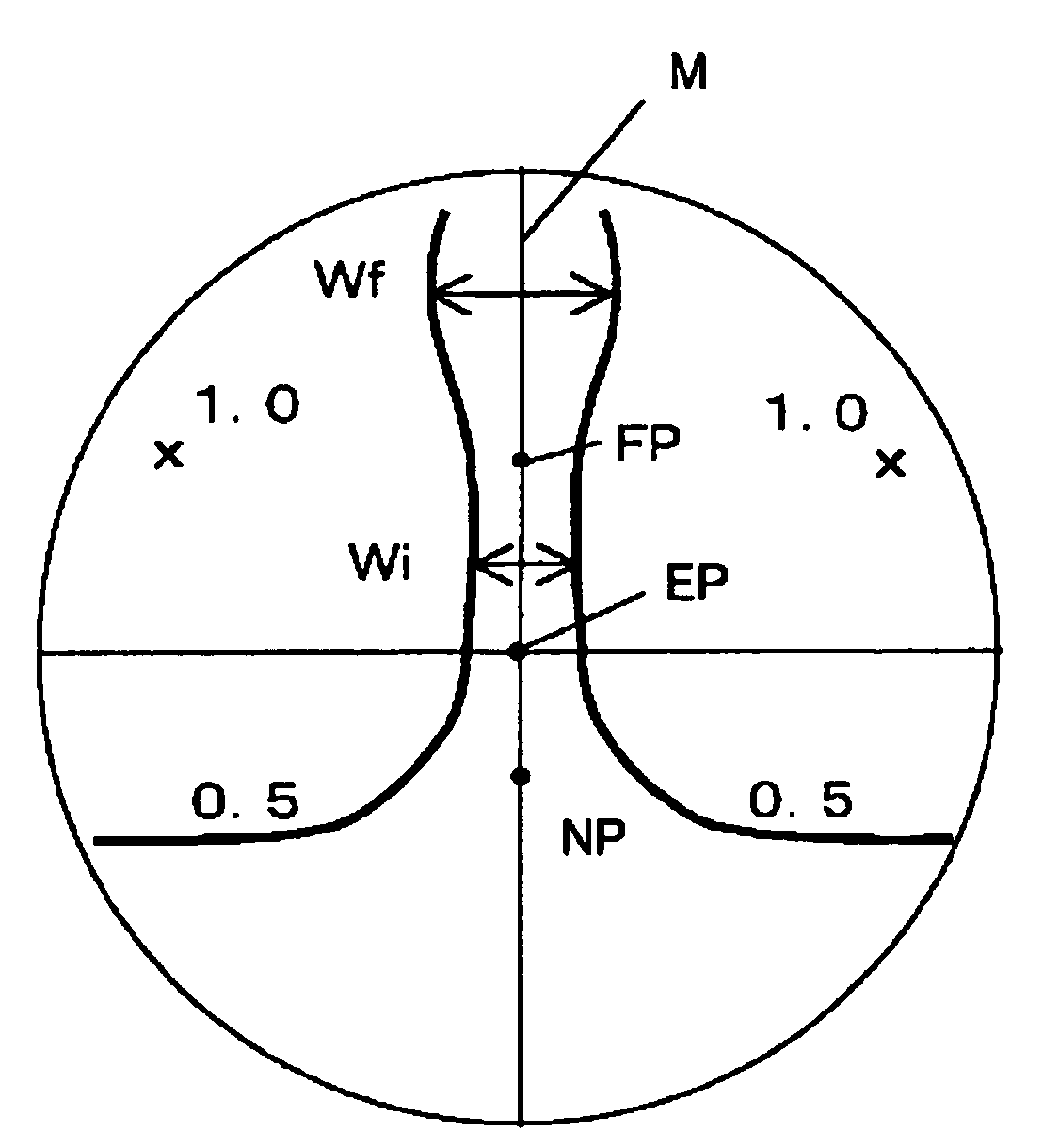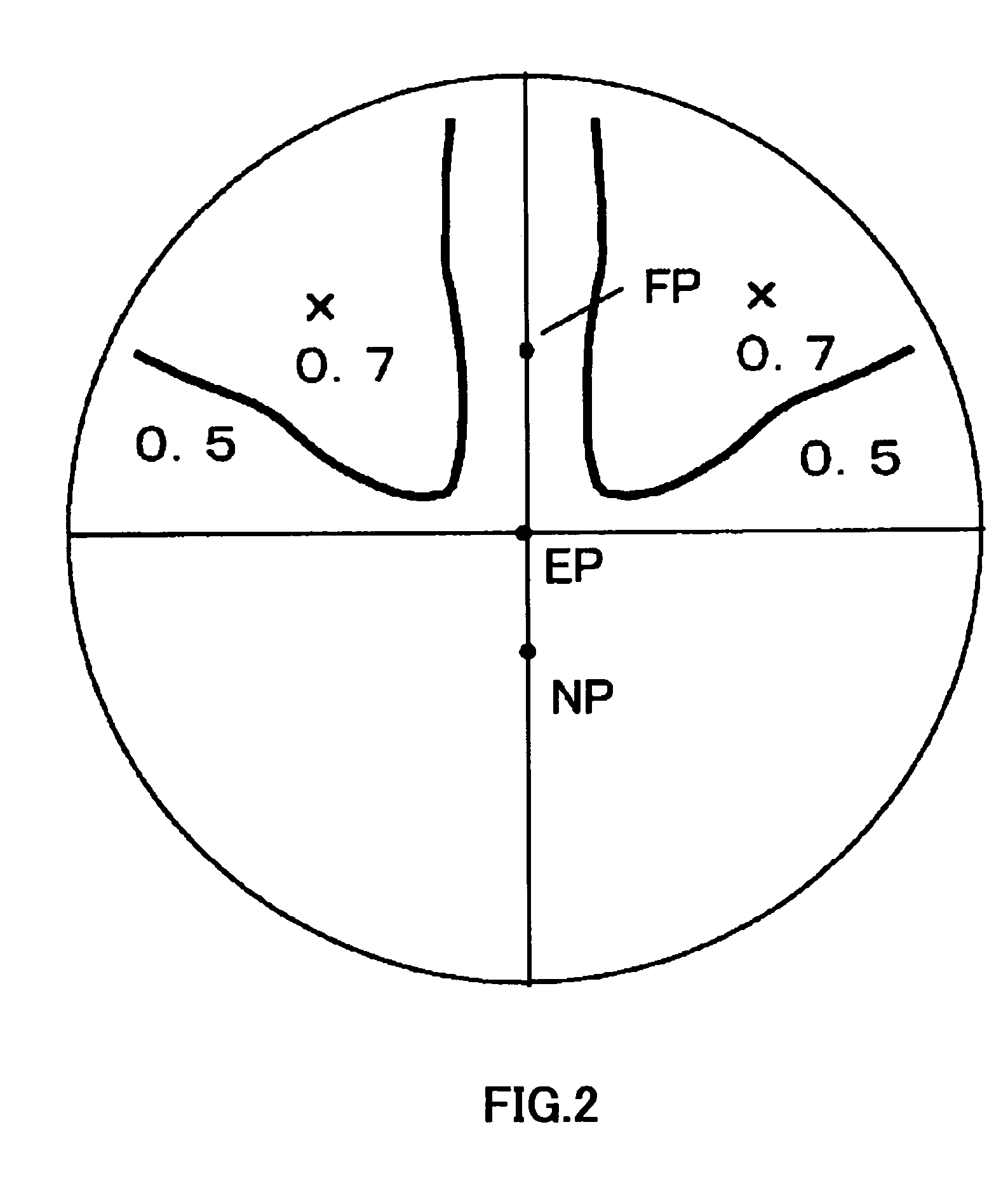Progressive addition power lens
a technology of addition power and power lens, applied in the field of progressive addition power lens, can solve the problems of blurry object, distortion, blurry object, etc., and achieve the effect of reducing incongruity
- Summary
- Abstract
- Description
- Claims
- Application Information
AI Technical Summary
Benefits of technology
Problems solved by technology
Method used
Image
Examples
Embodiment Construction
[0033]The present invention will now be described in detail by describing illustrative, non-limiting embodiments thereof with reference to the accompanying drawings.
[0034]FIG. 1 shows an illustrative, non-limiting embodiment of the present invention. That is, FIG. 1A shows an aberration distribution and FIG. 1B shows a dioptric power variation on the principal meridian curve. In this embodiment, the decrease in refractive power in the range from the near point (NP) to the far point (FP) is 1.5 D.
[0035]Furthermore, the length of the intermediate corridor (length of NP−FP) is 25 mm. The maximum width (Wf) of the clear visual region of the far portion is not more than twice the minimum width (Wi) of the clear visual region of the intermediate portion (Wf is 14 mm and Wi is 7.5 mm in this specific embodiment). The clear visual region of the near portion is more than 60 mm wide, and extends to the left and right ends of the lens. The maximum astigmatism of the side portions is 1.0 D, and...
PUM
 Login to View More
Login to View More Abstract
Description
Claims
Application Information
 Login to View More
Login to View More - R&D
- Intellectual Property
- Life Sciences
- Materials
- Tech Scout
- Unparalleled Data Quality
- Higher Quality Content
- 60% Fewer Hallucinations
Browse by: Latest US Patents, China's latest patents, Technical Efficacy Thesaurus, Application Domain, Technology Topic, Popular Technical Reports.
© 2025 PatSnap. All rights reserved.Legal|Privacy policy|Modern Slavery Act Transparency Statement|Sitemap|About US| Contact US: help@patsnap.com



